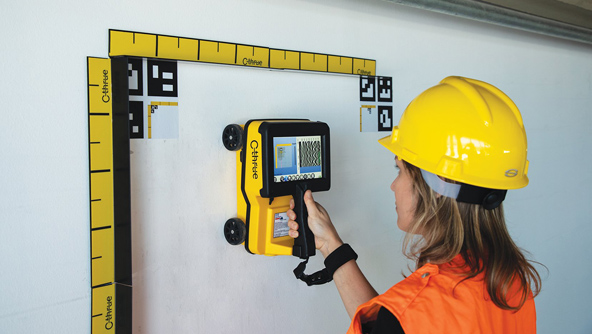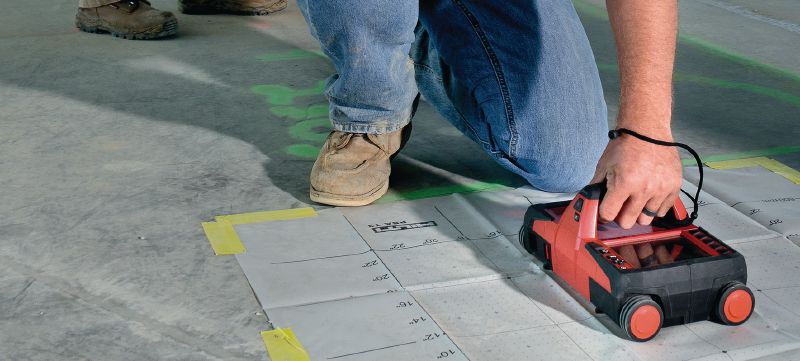Comprehensive Guide to Concrete Scanning Technologies
Comprehensive Guide to Concrete Scanning Technologies
Blog Article
Elevate Your Construction Refine With the Strategic Insights of Concrete Scanning for Boosted Efficiency
One such innovation that has actually reinvented the construction market is concrete scanning. By harnessing the strategic insights supplied by concrete scanning, building experts can unlock a world of boosted performance and streamlined procedures.

Advantages of Concrete Scanning
Enhancing project effectiveness and safety and security, concrete scanning uses a non-destructive approach for detecting concealed items within concrete structures. By using technologies such as ground-penetrating radar (GPR) and concrete x-ray imaging, construction teams can properly locate rebar, post-tension cords, electrical avenues, and various other obstructions prior to boring, reducing, or coring into concrete.
The advantages of concrete scanning are many. First of all, it decreases the risk of unintended damage to critical structural components, reducing the possibility of costly fixings and task hold-ups. It boosts worker safety by offering real-time understandings into the location of concealed dangers - Concrete Scanning. Building and construction websites can be intricate atmospheres, and recognizing what exists under the surface area can avoid injuries and accidents.
Furthermore, concrete scanning advertises general task efficiency by simplifying operations and protecting against rework. By determining prospective concerns early on, teams can change their plans proactively, conserving time and sources in the lengthy run. Fundamentally, the adoption of concrete scanning modern technologies is a tactical financial investment that pays returns in terms of security, efficiency, and cost-effectiveness.
Modern Technology Combination for Efficiency
Concrete scanning's ability to streamline process and improve job performance can be more enhanced via strategic assimilation of advanced innovations. By incorporating Building Information Modeling (BIM) software application into concrete scanning processes, building and construction groups can achieve a greater degree of precision and coordination. In addition, the integration of Increased Reality (AR) modern technology with concrete scanning can boost on-site visualization, allowing job managers and employees to overlay electronic info onto the physical atmosphere in actual time.
Staying Clear Of Expensive Errors
Exactly how can careful attention to information throughout concrete scanning procedures help construction teams in preventing pricey errors? Concrete scanning plays an essential role in recognizing potential concerns prior to they escalate into pricey blunders. By making use of advanced scanning innovations such as Ground Penetrating Radar (GPR) and electromagnetic induction, building groups can properly find rebar, energies, spaces, and various other blockages within concrete structures. This degree of precision allows task supervisors to make informed decisions concerning the format and layout of their building plans, lowering the danger of unexpected damage to essential framework during the building process. Additionally, concrete scanning aids in guaranteeing structural integrity by identifying weak points or flaws in the concrete very early on, permitting timely fixings and adjustments. By proactively dealing with these problems, building and construction groups can prevent pricey mistakes such as rework, hold-ups, or safety and security hazards that may emerge from overlooked disparities in check out this site the concrete framework. Inevitably, purchasing thorough concrete scanning treatments confirms to be a cost-effective strategy in the future, saving both time and resources while boosting total job performance and quality.
Enhancing Job Management
Precise interest to detail during concrete scanning refines not only assists in staying clear of pricey mistakes yet additionally lays a solid structure for efficient task management in building undertakings. By integrating concrete scanning technology into project monitoring strategies, construction groups can improve process, boost communication, and guarantee that jobs stay on track.
Concrete scanning gives useful insights right into the architectural stability of existing components, enabling project managers to make enlightened decisions concerning design adjustments or building and construction sequences. This positive approach lessens the risk of unforeseen delays or rework, inevitably conserving time and resources. Furthermore, the data obtained from concrete scanning can be incorporated right into Building Info Modeling (BIM) platforms, making it possible for real-time collaboration and sychronisation amongst different stakeholders.
Moreover, concrete scanning helps project supervisors identify prospective hazards or obstacles prior to they intensify right into bigger concerns, promoting a more secure workplace for all included. With improved presence and precision given by concrete scanning modern technology, task managers can efficiently plan, keep an eye on, and implement building and construction tasks with greater efficiency and self-confidence.
Making The Most Of Productivity
To boost efficiency in construction jobs, Full Article applying efficient strategies and utilizing sophisticated innovations is vital. Taking full advantage of performance involves simplifying processes, optimizing resource allowance, and minimizing downtime. One crucial aspect of maximizing performance is via the fostering of concrete scanning innovation. By utilizing ground-penetrating radar (GPR) and other scanning approaches, building and construction teams can precisely find rebar, avenues, and other subsurface aspects, reducing the risk of costly mistakes and delays during excavation and exploration.
Additionally, accepting Building Info Modeling (BIM) software program can significantly improve efficiency by developing detailed 3D designs that enhance job visualization and coordination among various professions. BIM permits better clash discovery, enabling concerns to be determined and resolved before construction also begins, conserving time and resources in the long run.
Implementing a lean building and construction strategy, which concentrates on getting rid of waste and maximizing performance throughout all project stages, is another effective approach for maximizing productivity. By fostering partnership, interaction, and continual enhancement, construction groups can work much more cohesively towards achieving job goals in a streamlined and efficient fashion.
Final Thought
To conclude, the critical execution content of concrete scanning in the building process uses numerous benefits, including boosted efficiency, price savings, boosted project management, and improved productivity. By integrating this technology, building and construction groups can avoid expensive errors, enhance their procedures, and optimize their total task result. Concrete scanning is a useful device that can boost the building and construction procedure and result in even more successful and effective outcomes.

Report this page